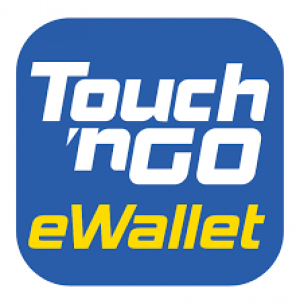What's the right e-Wallet for me? Let us help you!
Showing all 10 results
- Suitable for flight booking
- Virtual card provided
- Less physical stores merchant
- Does not provide virtual card for online shopping
- Has withdrawal fees
- Able to pay for huge number supported services
- Support many devices
- Does not provide virtual card for online shopping
- Has withdrawal fees
- Able to pop up using other e-Wallet
- Does not have specific Wallet limit
- Does not provide virtual card for online shopping
- Able to pay for multiple support services in the Grab App itself
- Each GrabPay transaction lets you earn points to redeem attractive deals
- GrabPay’s partnership with Maybank allows for cross platform use
- Does not provide virtual card for online shopping
- Quite number of voucher and discount
- Seamless payment solution
- Fast refund
- Less physical stores merchant
- Does not provide virtual card for online shopping
- Great for save up for a specific goal
- Able to tracker the expense
- Able to Split the bills
- Provided virtual debit card
- Cannot withdraw money from an ATM machine
- Easy for petrol filling
- Able to share the e-Wallet within family members
- Support many devices
- Only available for Petronas fuelling
- Quite number of voucher and discount
- Seamless payment solution
- Fast refund
- Less physical stores merchant
- Does not provide virtual card for online shopping
- Able to pay for huge number supported services in the Touch 'n Go App itself
- Able to use for Toll payment and RFID
- Does not provide virtual card for online shopping
- Cashback rewards
- Less physical stores merchant
- Does not provide virtual card for online shopping
- Less merchant coverage
VPN - Frequently Asked Questions
What Is a e-Wallet Wallet
An application for conducting financial transactions on mobile devices is known as a e-Wallet (or electronic wallet). Your passwords and payment details are securely stored there. Instead of carrying your cards with you while shopping, these programmes let you pay using your mobile. You input and save the details of your credit card, debit card, or bank account so that you may use your smartphone to make purchases later on.
How an e-Wallet Works
The purpose of e-Wallets is to increase access to financial goods and services by utilising the capabilities of mobile devices. Due to its ability to safely and conveniently store all of a user's payment information, e-Wallets effectively do away with the need to carry a traditional wallet.
e-Wallets convey payment information securely from your smartphone to a point of sale equipped to receive the data and connect via these signals using a mobile device's wireless capabilities including Bluetooth, wifi, and magnetic signals.
Currently, the technologies used by mobile devices and e-Wallets are:
- QR codes: Matrix bar codes called quick response codes may hold data. To start a transaction, you utilise the camera on your device and the scanning feature of the wallet.
- Near field communication (NFC): Via electromagnetic waves, two smart devices can connect to one another using the NFC technology. To connect, two devices must be within around 4 centimetres (1 inch) of one another.
- Magnetic secure transmission (MST): a point of sale's slot reads your card using the same technology as magnetic card readers. This encrypted field is generated by your phone and may be read by the point of sale.
Your smartphone sends the card details you keep on hand and decide to use for a transaction to the point of sale terminal, which is linked to payment processors. The money is then forwarded through the banks and credit card networks via the processors, gateways, acquirers, or any other third parties participating in credit and debit card transactions.
Advantages and Disadvantages of e-Wallets
Utilizing a e-Wallet reduces the amount of financial and personal information you need to carry with you throughout the day, which is one of its key benefits. There is no risk of a card slipping out of your wallet or of leaving your card in the ATM slot if everything is stored in your digital wallet, therefore you no longer need to carry physical cards or a wallet. Furthermore, you cannot misplace your entire wallet.
A bank account at a bank with a physical branch is not necessary for using a e-Wallet. Instead, you may deposit your money in an online-only bank, which enables greater financial inclusion by providing underbanked and unbanked populations with access to financial services.
If you use a e-Wallet from a supplier that hasn't been screened or doesn't have a solid reputation, security can become a problem. You run the danger of providing someone else access to your funds if your phone isn't password-protected. It's also possible that some of the neighbourhood stores you love to patronise may not yet have a point of sale that uses this technology.
Do I Need an e-Wallet
You are not forced to use a digital wallet. However, because you don't need to carry about credit and debit cards, they provide a practical way to pay for your purchases. Additionally, since you can't lose your cards if you don't carry them, this improves card security.










